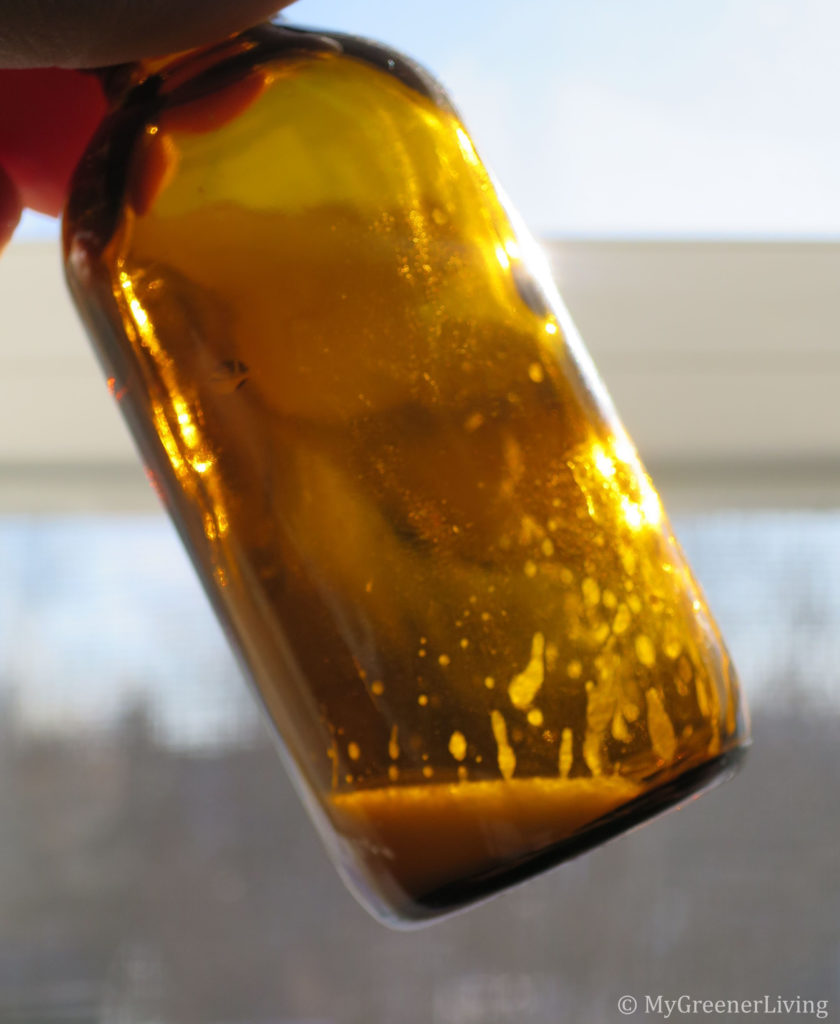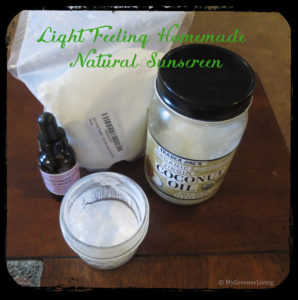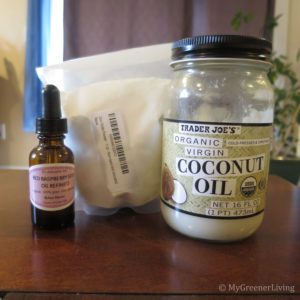I am not a fan of spiders. I am very uncomfortable when I find them in my home…or inside any normal human-inhabited place I try to live in harmony with the earth. But sometimes I need the wonderful things of nature to stay outside, in nature. I don’t want to kill the spiders, but I want to make them want to stay away from the inside of my home. I needed a spider repellent.

Disclaimer: This post contains affiliate links. See my Disclosure Policy for more information.
I wanted to find a way to drive spiders away without harming them. After doing a bit of research, I found that spiders dislike peppermint. So I decided to whip up a simple essential oil spray using peppermint oil. If you’ve made my DIY toilet spray, you’ll find these instructions remarkably familiar.
Spider Repellent Spray Ingredients
- glass spray bottle (I always use glass with essential oils – oils can react with plastic, and I avoid plastics in general)
- peppermint essentail oil
- liquid castile soap (I use a couple squirts of my hand soap made from my castile soap, or a few drops of Dr. Bronner’s)
- water

Instructions
- Drop several drops of liquid castile soap into the spray bottle. Add 10 drops of peppermint essential oil for each ounce that the bottle holds. I used a 2 fluid ounce bottle, so I added 20 drops essential oil. Shake the bottle gently to mix the soap and oil. The solution will look opaque.
- Fill the bottle with water. Put the cover on the spray bottle, and shake gently. The solution will look opaque.
That’s it! The oil should stay blended with the water (the solution looks opaque rather than clear like water with a layer of clear-ish oil floating on top), due to the castile soap used as an emulsifier.

How do I use the spider repellent spray?
I spritz this spray around windows and doors through which I do not want spiders to enter. I know that I see spiders most frequently in my bathroom, so I periodically spray around the bathroom window. I also see spiders in my kitchen so I spray around the exterior doors near my kitchen.
Does it work? How do you know?
So I had to find out if this spider repellent spray really worked…and the only way I could think of to test the spray was to use it around a spider to gauge its reaction. Yes, I feel like an evil awful person for terrorizing a spider for this experiment. But I did it anyway. There was a spider in my bathroom. It was a species that usually doesn’t bother me, the kind that builds a little cocoon-like thing where the wall meets the ceiling and just chills out there all day. The kind that usually leaves me alone. My research shows these guys are called “yellow sac spiders.”
Anyway, back to the experiment. I sprayed plain water about a foot away from the spider. It did not move. Then I sprayed the peppermint spray in the same area, about a foot from the spider, and the spider moved away. I sprayed again and it moved away again. At this point I decided that the spray was effective. I ended the experiment, then trapped the spider and set it free outside. I thought the poor little guy had been tortured enough. In the 6 months since my experiment, I have sprayed this around the bathroom window every few weeks and I have not found any spiders inside. Victory!

Cost
Cost for a 2-fluid ounce bottle of toilet spray, using lemon oil:
- bottle: Available on Amazon for $9.46 for 12. $9.46/12=$0.788
- castile soap: For ease of calculation, I’ll use the price from Amazon – $15.99 for 32 oz. ($15.99/32oz)x(1 oz/600 drops)x(5 drops)=$0.004
- peppermint essential oil: Available on Amazon for $13.82 for 4 oz. ($13.82/4oz)x(1 oz/600 drops)x(20 drops)=$0.115
- Water: Where I live, water is $10.02 for 1000 gallons. With 128 oz per gallon, 2 oz water costs: ($10.02/1000 gallons)x(1 gallon/128oz)x(2oz)=$0.00016 (essentially free)
Total cost: $0.91 for 2 oz bottle, including bottle. But having a safe, natural way to keep spiders away is invaluable to me!
Do you let spiders live in your home? Or do you try to keep them away? Please share your spider repellent techniques in the comments below!


